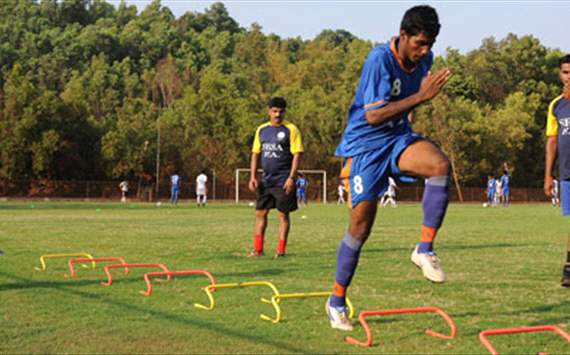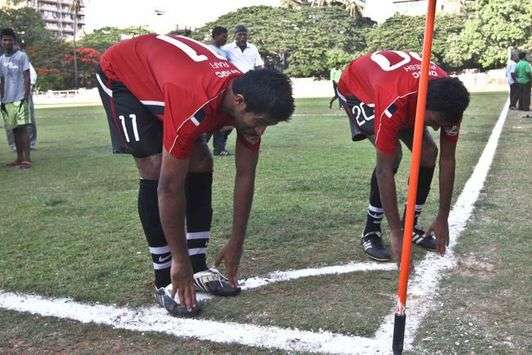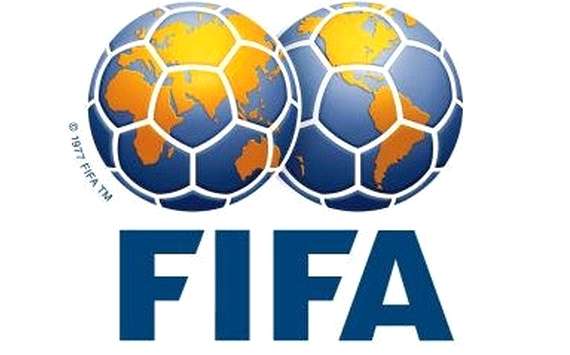Indian footballing circles are in a frenzy as they prepare for FIFA president Sepp Blatter’s impending visit to India.
Blatter, on his second trip to India, the first being in 2007, has come to lay the groundwork for a bid by India for the U-17 World Cup in 2017, which if awarded to the country would definitely be the biggest football tournament to be hosted in the Indian sub-continent.
It would bring in new investment, and help improve infrastructure in the country. immensely.
However before we look at the potential positive outcomes from India hosting a World Cup, we must have a look at the present infrastructure.
What has happened to the FIFA approved projects announced during and since Sepp Blatter’s earlier visit to India? How have they or will impact the future of football in India? Goal.com has a look. Leys See What Goal.com Want To Say :)

“Win in India with India” - In 2007 when Sepp Blatter visited India, this scheme was his gift to the country, through which they hoped to solve the infrastructural issues. Since then FIFA has allotted to India eight artificial turfs and spent $8 million in total grants towards improving football infrastructure in India. These eight turfs were assigned to Mumbai, Shillong, Imphal, Bangalore, Goa (two pitches), Kolkata and Kolhapur. Some of these projects, like at Shillong and Bangalore, have been completed while it is close to completion in Mumbai and Imphal. Acquiring the land on lease for a period of 30 years was one of the pre-requisites and that proved to be one of the major hurdles for this project.
FIFA Goal Project – After the first Goal project, involving the construction of the AIFF headquarters in Delhi was completed, and subsequently inaugurated by Sepp Blatter in 2007, a second FIFA Goal project was launched in December 2006 involving construction of training facilities and administrative offices in the two states of Karnataka and Sikkim.
This project was expected to help augment the training facilities in these areas, but progress has been really slow in Sikkim and the venture is still under implementation, having come up against governmental red-tape and general apathy of the local authorities. However the Sikkim Goal project has now finally reached close to completion and might be ready for inauguration by April 2012, according to sources.

Regional and Elite Academies - When the FIFA president visited in 2007, he had stressed on how important infrastructure at the grassroots level was for any country to progress at the international level in football.
As a part of this exercise, an idea to set-up academies at various levels was mooted upon last year and finally four regional academies in India were given a green signal with FIFA’s backing. These were allotted to Bangalore, Kolkata, Mumbai and Delhi (NCR) after a visit by a FIFA technical committee in mid-2011.
These centres are supposed to be operational from the end of March, and it remains to be seen how they impact Indian football. Meanwhile in phase 2, three more academies are to come up in Chandigarh, Kerala and Chennai by March 2013.
Scouting Program - Each of the above mentioned academies are expected to house 30-to-35 boys, and to select the right kind of talent, FIFA is also helping out the AIFF by setting up a guideline for the scouting process through which boys of the ages of 13-14 will be selected after a process involving football schools from across the country who shall be reviewed by the Indian footballing authorities prior to certification.
FIFA is even paying the salary of AIFF Academy Instructor Scott O'Donnell, who was previously the coach of Cambodia.
An elite academy, for which kids from the regional academy will be selected at the age of 16 has also been mooted. But concrete plans, including location of the academy haven’t yet been decided.

Cooperage Stadium – FIFA showed its largesse and commitment to Indian football when it sanctioned a $2 million grant for the renovation of the much neglected Cooperage stadium in Mumbai in April 2011.
One of the several artificial pitches that was approved for India under the 'Win in India with India' was also laid at the venue. However much work remains to be done and one hopes that the stadium is up and about before the next season's I-League.
Other offshoots of the 2007 visit - There are also a number of other initiatives running alongside 'Win in India with India. 'Vision India', which is part of the AFC's 'Vision Asia' programme, and FIFA's Goal, Com-Unity and FUTURO III programmes are already concentrating on the development of amateur football and regional football associations in the states of the Indian Union whereas various government bodies are prioritising the development of football in rural areas and Indian schools.
Training coaches, referees and technical directors will be another cornerstone of the initiative.
Dr.Shaji Prabhakaran, an Indian, has been appointed as FIFA's regional development officer for south and central Asia.

So what can be seen is that FIFA has shown genuine interest in improving general infrastructure in India, recognizing the potential for football in the country, however many of these projects are lagging behind in schedule due to apathy at the local level and if India is successful in their bid to host the 2017 U-17 World Cup then the authorities would definitely have to shake off their lethargy and roll their sleeves up to meet deadlines, which wouldn’t be relaxed for a major event.
SOURCE:GOAL.COM



















No comments:
Post a Comment